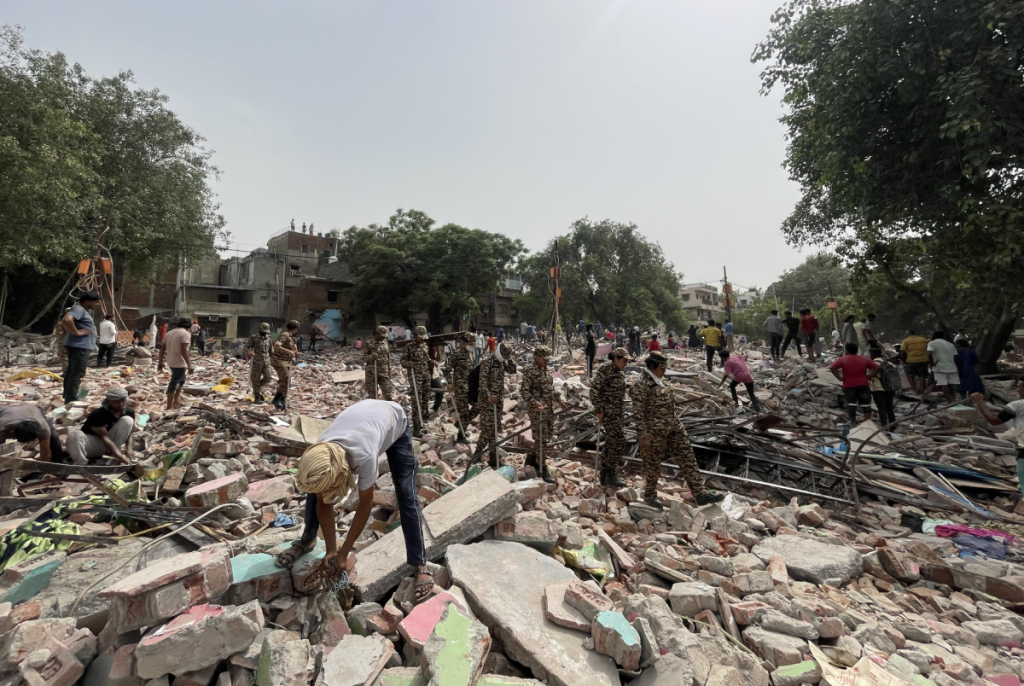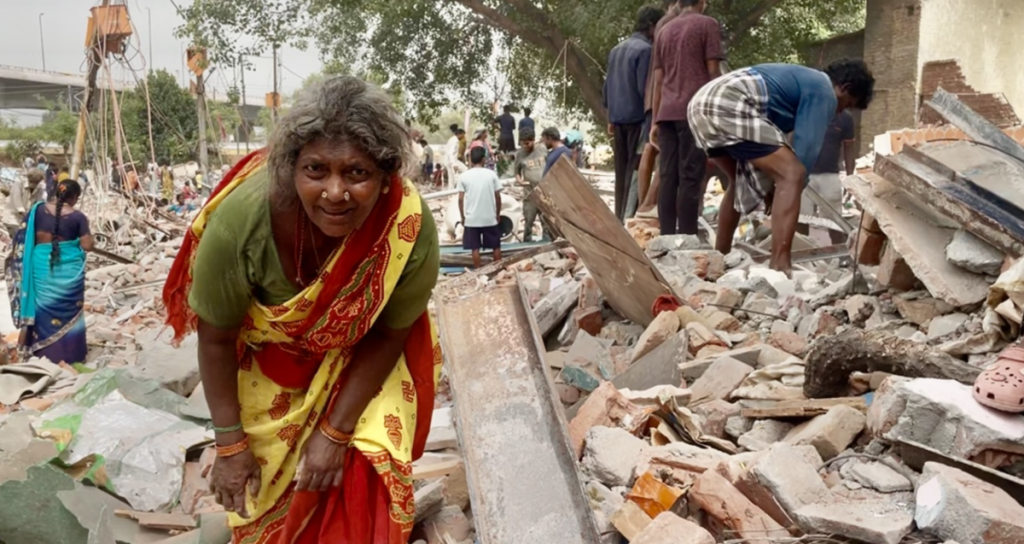'Development For Whom?': Residents of Demolished Madrasi Camp Tackle Grief, Inconvenience and Loss
New Delhi: On June 1, the Delhi Development Authority (DDA) demolished homes in the Madrasi Camp in New Delhi’s Jangpura area on the directions of the Delhi high court.
The Madrasi Camp is primarily home to working class Tamils. The Delhi government has been directed to relocate families living there as the settlements have allegedly been blocking a key drain.
While the Tamil Nadu government has said that it will support families looking to return to their home districts, three days after the bulldozers rolled in, the rubble at Madrasi Camp is still with grief.
Krishna, a resident of the camp, is an employee at the Rashtrapati Bhavan. He says the demolition was arbitrary and offers examples of how structures on the same tract of land have been left untouched while others were taken down.
“They told us the drain had to be cleared. And yet, the buildings right across from ours are still standing. While the temple was demolished, the airline staff quarters nearby are untouched," he says.
While notices were issued in advance, many residents like Krishna say they were misled and told that it would be routine drain maintenance work, not a full demolition.
Residents also point out the glaring disparity of treatment. Krishna notes that a high-profile government housing, also purportedly on encroached land, was never touched.
“This is BJP’s demolition spree, Mr Modi calls it development, but for whom? For us, it’s destruction. Development means uplifting the poor, not throwing them out," he said.

Residents collect their belongings from the rubble at the Madrasi Camp in New Delhi, which was demolished on June 1. Photo: The Wire.
Encroachments or the Metro construction?
The Barapullah bridge, a 400-year-old Mughal-era structure, lies beneath the modern Barapullah flyover in Delhi. It is believed to have been constructed in 1621-22, and was once an important passage for Mughals travelling between Humayun’s Tomb and the Nizamuddin Dargah.
Over time, the bridge had fallen into disrepair. Untreated sewage and garbage collecting in the canal under the Barapullah bridge, encroachments, and its damaged piers had rendered it almost unrecognisable as a historical site. The garbage collecting in the canal has also led to flooding, as it stopped rainwater from flowing through the canal. While the garbage has now been cleared, the water in it still gives off a foul smell.
According to authorities, the camp was allegedly blocking the Barapullah drain, which was leading to the water-logging. But residents say the problem began only after Metro construction in the area, which blocked a water outlet to the Yamuna.
In an order on May 9, the Delhi high court directed the Delhi government’s Public Works Department to begin demolishing the camp starting from June 1.
What followed left hundreds of families homeless overnight, with many accusing the authorities of systemic neglect. Residents have also claimed that the DDA also appears to have a ramshackle rehabilitation process.
Three days since the demolition, one of the residents in the camp who requested anonymity says, “I haven’t cooked or eaten anything since. They threw us out, our belongings were stolen, our houses destroyed. What more can I say?”.
For many, the camp was home for decades. “I’ve lived here 55 years,” the woman quoted above adds, murmuring of her children who grew up here.

Residents collect their belongings from the rubble at the Madrasi Camp in New Delhi, which was demolished on June 1. Photo: The Wire.
Just three months ago, DDA officials had surveyed the area. A migrant from Bengal, Ashok, says, “They (BJP MLA Tarvinder Singh Marwah and his supporters) came with tulsi leaves and Ganga water during the Delhi election campaign season, swearing that they would resettle residents in the same area.”
Another resident recalled. “They took Rs 500 for documentation. Out of the 370 who submitted documents, only 179 were approved. Many have been denied any resettlement.”
A key grievance is that while the court was told only 300 families lived in the camp, nearly 700 were displaced. “Only 179 got homes. The rest are now living on the streets,” says Ashok.
“I didn’t get any house,” a woman says. “They’ve destroyed everything. Where should I go with my small children?” she asks.
Narela
Several families have been relocated to Narela, over 50 kilometres away.
“I work in the Nirman Bhawan as a private employee – how will I reach the office from Narela? If my commute costs Rs 12,000 a month and I earn Rs 20,000, what do I survive on?” says Vijay Kumar, who was at the Madrasi Camp site when The Wire visited.
“It takes three hours just to get there,” says another woman whose son was born in the Madrasi Camp and who was searching for his school books in the rubble.
Another resident asks, “How will we keep our jobs when we have to travel six hours a day? My wife cleans houses here, I work at the Bima Bhawan. We can’t afford to commute.”
For A. Palani, a housekeeper in his forties who is originally from Tiruvannamalai in Tamil Nadu, the biggest worry is his children. “My daughters study in Lajpat Nagar. How will they travel five hours every day from Narela?” he asks.
Local residents say no elected representative has visited the site since the court order. “Our MLA Marwah lives nearby but never came. The CM says Rs 700 crore was allocated for slum dwellers – was it for this demolition?” she says.
Despite the Delhi government’s claim in court that rehabilitation would happen under the 2015 slum policy, those on the ground say none of the promised help has come.
In the absence of approachable authorities, residents are relying on civil society and legal aid. Many residents who are armed with papers have had to move courts to secure rehabilitation in Narela as well.
For Tamil migrants of Madrasi Camp, the demolition has not just broken homes but erased history. Krishna says, “My grandfather came here in 1962. My father was born here. So was I. Now, they want to send us back like we were never part of this city.”
This article went live on June third, two thousand twenty five, at eleven minutes past four in the afternoon.The Wire is now on WhatsApp. Follow our channel for sharp analysis and opinions on the latest developments.




